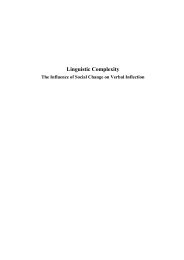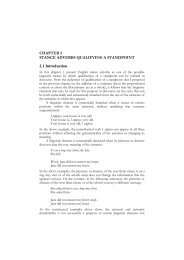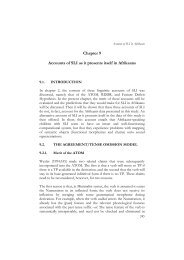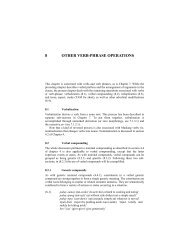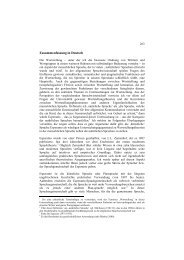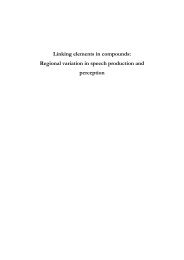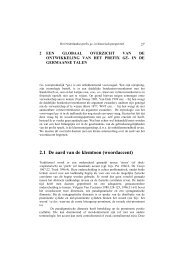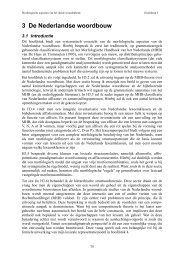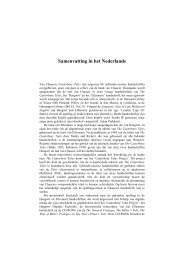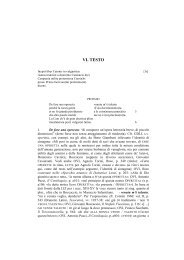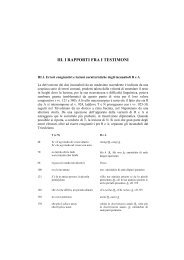Chapter 3 - LOT publications
Chapter 3 - LOT publications
Chapter 3 - LOT publications
Create successful ePaper yourself
Turn your PDF publications into a flip-book with our unique Google optimized e-Paper software.
56 The putative uniqueness of try<br />
and other ConCo constructions is that conative try constructions can be paraphrased as<br />
infinitives. 1 In contrast, ConCo constructions can only be paraphrased with a purposeadjunct<br />
reading.<br />
(2) a. John will try and eat an apple [Conative try]<br />
b. John will try to eat an apple<br />
‘*John will try, in order to eat an apple’<br />
(3) a. John will go and eat an apple [ConCo]<br />
b. John will go to eat an apple<br />
‘John will go, in order to eat an apple’<br />
(4) a. John will sit and eat an apple [ConCo]<br />
b. John will sit to eat an apple<br />
‘John will sit, in order to eat an apple’<br />
Secondly, despite their atypicality, examples with try have informed a number of<br />
studies (e.g. Carden and Pesetsky (1977)) adding to the confusion between ConCo and<br />
SceCo and leading to incorrect generalizations. For these reasons I consider it vitally<br />
important to establish the place of conative try in the typology I have developed. To<br />
this end, I will apply the tests developed in the first part of this chapter. I will show<br />
that conative try constructions differ from ConCo constructions with sit and go in most<br />
respects.<br />
3.1.1 Morphological conditions<br />
Another salient and curious difference between conative try and ConCo and SceCo<br />
is that it cannot tolerate any inflection (Carden and Pesetsky 1977, Schmerling 1975).<br />
Only the bare forms of the verbs can occur in this construction. The same is not true of<br />
other ConCo verbs like sit and go. 2 The following examples illustrate this with respect<br />
to bare verbs, present tense, past tense and participle morphology.<br />
(5) a. John will try and eat an apple [Conative try]<br />
b. John will go and eat an apple [ConCo]<br />
c. John will sit and eat an apple<br />
(6) a. *John tries and eats an apple [Conative try]<br />
b. John goes and eats an apple [ConCo]<br />
c. John sits and eats an apple<br />
1 This idea is expressed as far back as Gleitman (1965).<br />
2 Pullum (1990) notes that try and V constructions act like bare aspectual come and go (Jaeggli and<br />
Hyams 1993) in being subject to a morphological condition prohibiting inflection on these forms.



